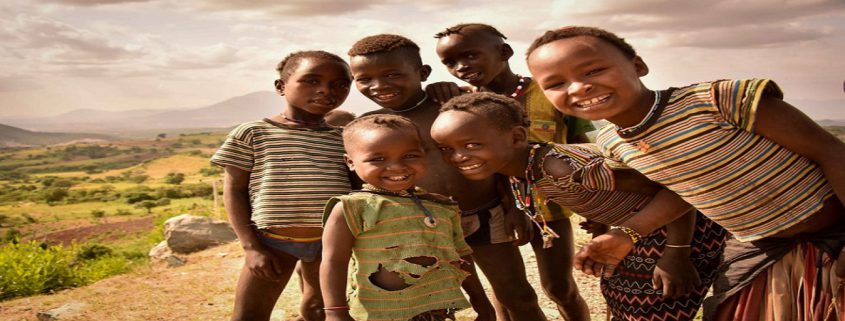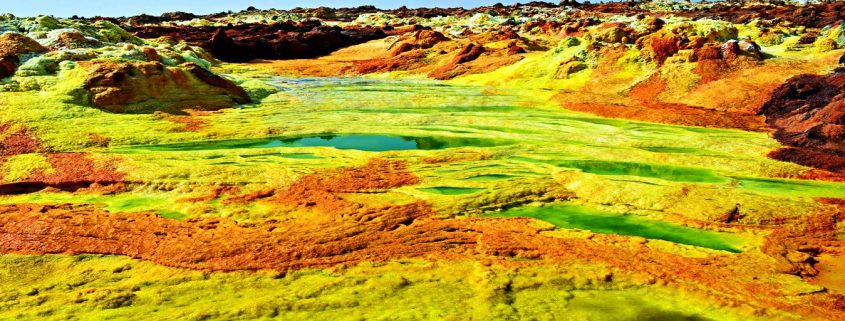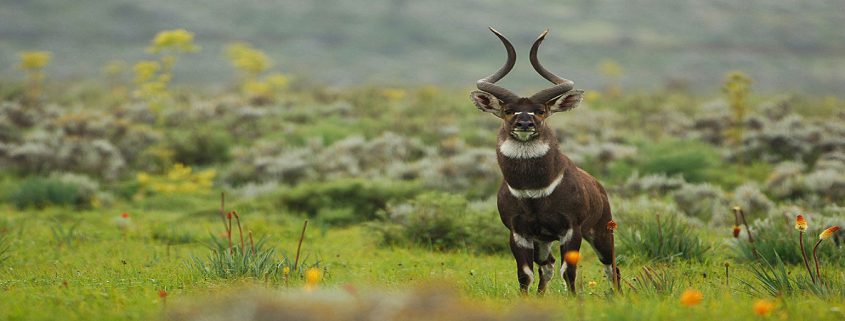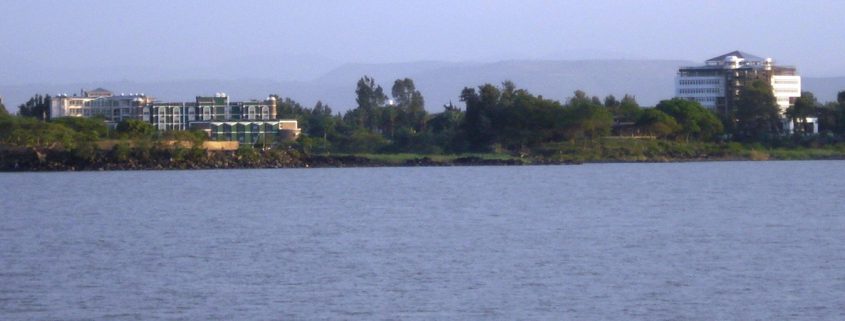Ethiopia is a land of contrast and extreme diversity. From the
lowest lowland on earth to the second highest mountain in Africa, from
the least complicated fascinating tribes of southern Ethiopia to the
capital city and headquarter of Africa, Ethiopia is quite a contrast of
historical, cultural and natural attractions.
Traveling in Ethiopia is the same as traveling through time. The rich
history of northern Ethiopia – Axum, Lalibela, Gondar, Bahir Dar,
Harrar and others dates back more than 3000 years. The fascinating
tribes of southern Ethiopia – Konso, Mursi, Surma, Hamer and others make
you fall in love with the originality and simplicity of different human
living styles.
All these, coupled with the breathtaking natural scenery and wildlife
abundance of the country, makes Ethiopia a first travel site to be
visited in Africa.
Ethiopia is the earliest known home of humankind. A skeleton of an
older human ancestor Australopithecus Afarensis was discovered in 1974
in the Afar region. Anthropologists have established that the skeleton
covering 40% of the human body had belonged to a twenty-years-old female
that lived 3.5 million years ago. Registered by UNESCO as a World
Heritage, the site of the discovery is called Hadar.The Skeleton is
popularly known as Lucy or Dinkinesh. The discovery has completed the
missing link between apes and men – paving the way for the search to
human origins.
In addition, the earliest known hominid, 4.4 million years old
Ardipithecus Ramidus was discovered in the Middle Awash in 1992. The
recent discoveries include Australopithecus Garhi, 2.5 million-years-old
hominid. Garhi means ‘surprise’ in the Afar language – a language
spoken in the internationally acclaimed archeological site.
Independent for three millennia, Ethiopia has survived dynamic
historic changes and is the birthstone of great endogenous
civilizations. Today’s Ethiopia was once in control over the entire East
African territory. At that time it was a world-famous influential
powerhouse with absolute control over the Red Sea, Indian Ocean trade
routes and South Arabian countries Ethiopia is a country of variety,
extremes, uniqueness, freedom, colourful culture, religions, legends,
natural beauty and much more. On the map of East Africa, Ethiopia is
easily found in the area called the horn of Africa. Covering a total
area of 1,112,000 sq. km., Ethiopia shares boundaries with Kenya, Sudan,
Somalia, Djibouti and Eritrea. Ethiopia ranks second in Africa for
population size. With close to 87 million people, Ethiopia hosts about
83 different tribal groups, all of which speak different languages and
have their own cultural codes. The cultural variety, which is a result
of immense tribal differences, can be seen among the individual tribes.
Rich in culture and a variety of dialects, Ethiopia prides itself on
being the only nation in Africa to have its own language (Amharic) and
alphabet (Ge’ez).
Ethiopia was the first country to build a Christian church on African
soil. Christianity crossed the border in the 4th Century AD during the
time of the Axumite kingdom. Even now this church shelters the original
Ark of the Covenant brought from Israel by King Menelik I of Ethiopia.
It is found in the town of Axum in northern Ethiopia. In addition it is
here that the famous pre-Axumite obelisks stand. It is believed that the
erection of these obelisks dates back to 300-200 BC. The tallest (33m)
has fallen down; the second (27m) was stolen but the third (23m) still
stands. These structures are the tallest on earth to be carved out of a
single rock.The 12th-century town of Lalibela, located in north-west
Ethiopia, has been home to the extraordinarily carved rock-hewn churches
since the reign of King Lalibela (1181-1221 AD). These eleven rock-hewn
churches are sometimes referred to as the eighth wonder of the world.
Gondar, the town of castles and the 17th century Ethiopian capital,
has great historical significance. It was here that King Fasiladas
relocated the former capital. The best example of a medieval-period
church is that of Debre Berhan Selassie, which adds to Gondar’s charm.
Southwards, the Rift Valley system is another wondrous region where
many other attractions are sited. The six or seven Rift Valley crater
lakes are home to a large number of bird and marine life. They are also a
paradise for nature and water lovers. National parks with their exotic
birds, animals and plant life add to the beauty of the Rift Valley
region. Beautiful landscapes and natural features are the most enjoyable
components of the system. Salt lakes, active volcano sites and caravan
routes still number among Ethiopia’s great attractions in the Rift
Valley.
Further south is the Omo Valley with its popular ethnic treasures.
This is where about 50% of Ethiopia’s ethnic groups live: the Konso with
their terraced agriculture and rituals; the Mursi with their clay lip
plates and barbarian life style; the Hamer with their bull-jumping
ceremony, which young men must experience in order to qualify for
adulthood; and the Karo with their body painting and adornment. Here
unusual traditions such as dance, music and rituals from birth to
marriage and burial are still observed in their genuine and original
forms.
Nothing in this planet is quite as spectacular as the Danakil
Depression. Bubbling volcanoes light up the night sky, sulphurous mounds
of yellow contort into monstrous shapes and mirages of camels cross
lakes of salt. Laying 100m below sea level the Danakil depression is
about the hottest and most inhospitable place on earth. This will be the
best opportunity to visit the fascinating religious celebrations.
Ethiopian World heritage sites
According to the UNESCO World Heritage list, Ethiopia has the biggest
number of world heritage sites in Africa. With a total of nine natural
and cultural heritage sites the country tops the list.
Ethiopia and Morocco are first and second, respectively, among
African countries on the UNESCO World Heritage list. Although they both
have nine world heritage sites each, Ethiopia has been ranked higher
because of two main reasons.
Ethiopia not only has the highest number of world heritage sites on
the African continent, but one of the sites, the Rock-Hewn Churches of
Lalibela, was one of the first sites that were chosen as a heritage site
for the African continent at the list’s conception.
Among Ethiopia’s sites on the list of World Heritage Sites, UNESCO
has made attempts to increase the awareness of the importance of the
African human origin sites in Ethiopia. The aim is to conserve and
protect the areas from deteriorating.
The full list of Ethiopia’s natural and cultural heritage sites on
the UNESCO World Heritage Sites list (by year of inscription):
1-The Rock-Hewn Churches of Lalibela (1978)
Located in Lalibela, a town in the Amhara Region, the site is home to 11 medieval cave churches that were built in the 12th
century. Built during the reign of King Lalibela it was intended to
create a new Jerusalem after the capture of the original Jerusalem in
1187 – hence Lalibela also being known as “New Jerusalem”. The plan
appeared to the saint king in his dreams.
2- Simien Mountains National Park (1978)
The only natural heritage site in Ethiopia is also located in the
Amhara Region of the country. The territory of the park encloses the
Simien Mountains range that includes Ethiopia’s highest – Mount Ras
Dashen. The park is home to a multitude of endangered species. Among
them are the Ethiopian Wolf (also known as the Red Jackal), the walia
ibex, the gelada baboon – all which are endemic to Ethiopia – and the
caracal.
At the moment, this natural heritage site is the only one of the
Ethiopian natural or cultural heritage sites that is also on the UNESCO
List of World Heritage in Danger.
The Simien Mountains National Park was established in 1969 by Clive
Nicol who wrote about his experiences in his book From the Roof of
Africa.
3-Gondar (1979)
Fasil Ghebbi is a fortress and castle that is located in Gondar, a
city in the Amhara Region of Ethiopia. It was built by Emperor Fasiledes
who ruled Ethiopia from 1632 to 1667.
Covering an area of 70,000 Sq. m. Fasil Ghebbi also has many
structures in its enclosure. It has palaces, churches and monasteries
and even a market place. The first person to observe that “dotted among
the palaces are what remains of the pavilions and kiosks of the imperial
city” was Thomas Pakenham (Author of The Mountains of Rasselas:
Ethiopian Adventure) who visited Fasil Ghebbi in the late 1950’s. The
city has a mixture of building styles from Arab, Hindu to the Baroque
style that was brought by Jesuit missionaries.
4-Axum (1980)
Axum is a city that is located in the Tigray Region of Ethiopia. It
is the site of royal tombs, ruins of castles and, most importantly,
stelae and obelisks that date from the 1st to the 13th
centuries that were built during the time of the ancient Axum Empire –
one that was said to have given birth to the a state that was the most
powerful one between the Eastern Roman Empire and Persia.
Axumites traded with ancient Greeks, Egyptians and Asians. They had fleets that sailed as far Ceylon (Sri Lanka).
5-Lower Valley of the Awash (1980)
The Lower Valley of the Awash can be considered the exact location of
where mankind was born. Located in the Afar Region of Ethiopia, it is
the place where the approximately 3.2 million years old Lucy (Australopithecus) was discovered in 1974.
A place that has yet to yield all of its secrets was to also be the place where Ardi (Ardipithecus ramidus), a fossil that was 4.4 million years old (1.2 million years older than Lucy), would be found in 1994. In 2000 Selam (Austrolopithecus afarensis) or “Lucy’s baby” (despite the fact that she dies about 120,000 years before her) would be discovered.
Lucy, mankind’s earliest fossil, was given the name because after
discovering her Donald Johanson and his crew were celebrating in camp
and were listening to “Lucy in the Sky with Diamonds” – a popular
Beatles song.
6-Lower Valley of the Omo (1980)
This cultural heritage site is located in the Southern Nations,
Nationalities, and People’s Region in the southern part of Ethiopia. It
is the location of many fossil findings, the most famous of them being Homo gracilis.
On the banks of the Omo River archeologists have found fossil fragments like the important finding of the now extinct Australopithecus man and Olduwan hominids of the early Pleistocene era.
The Omo region is the yardstick by against which
all other ancient deposits in East Africa are measured by. Evidence was
researched for the site to establish bio-stratigraphical, radiometric
and magneto-stratigraphical scales spanning between one and 3.5 million
years.
7-Tiya (1980)
Another cultural heritage site in the Southern Nations,
Nationalities, and People’s Region Tiya is also an archeological site.
The site contains 36 monuments (including 32 carved stelae that, as of
date, are covered with symbols that have not been decrypted). It is
assumed that the stelae are of funerary significance because there are
tombs scattered around the stelae.
The site is from an age of ancient Ethiopian culture that is yet to be precisely determined.
8-Harar Jugol (2006)
Harar Jugol is a fortified historic town that is found in the Harari
Region of Ethiopia that was founded by Arab immigrants from Yemen in the
7th century. The city is encircled by a wall. It encompasses
102 shrines and 82 mosques making it considered to be the
fourth-holiest city of Islam. Some of the mosques date back to the 10th century.
When the Addis Ababa – Djibouti Railway was being built it was
intended to run through Harar. But because of geographical and financial
constraints the line had to be diverted away and the city of Dire Dawa
was born in 1902. It is sometimes known as “New Harar“.
9-Konso Cultural Landscape (2011)
The Konso Cultural Landscape, found in the Southern Nations,
Nationalities, and People’s Region, is a cultural site that features 55
kilometers of stonewalled terraces and fortified settlements in the
Konso highlands of Ethiopia.
The fortified settlements constitute of a spectacular example of
living in a cultural tradition that stretches back 21 generations (more
than 400 years). The whole area demonstrates the shared values, social
cohesion and engineering knowledge of the people.
It also the ingenuity of mankind and how he can not only survive but also thrive in a hostile (dry and rocky) environment.
The terraces are used to not only retain the maximum amount of water
needed but to also discharge the excess – all this while protecting the
soil from erosion.





